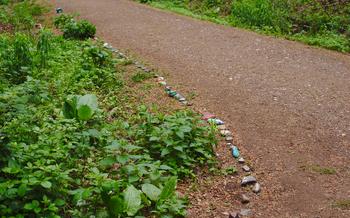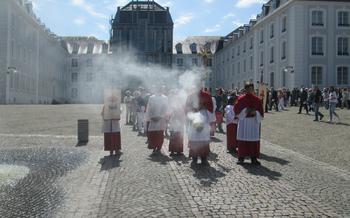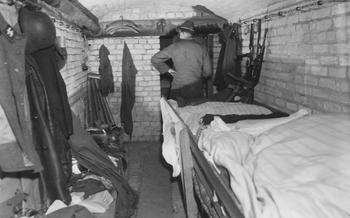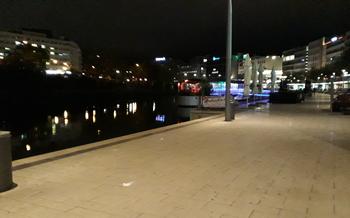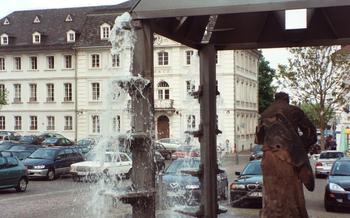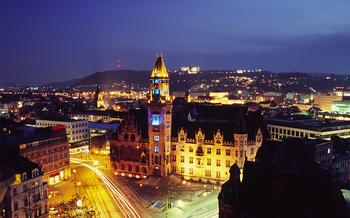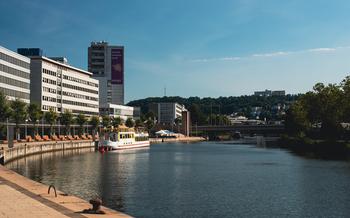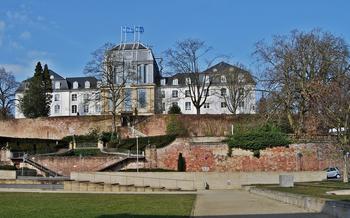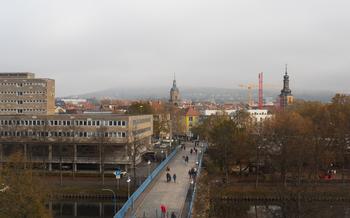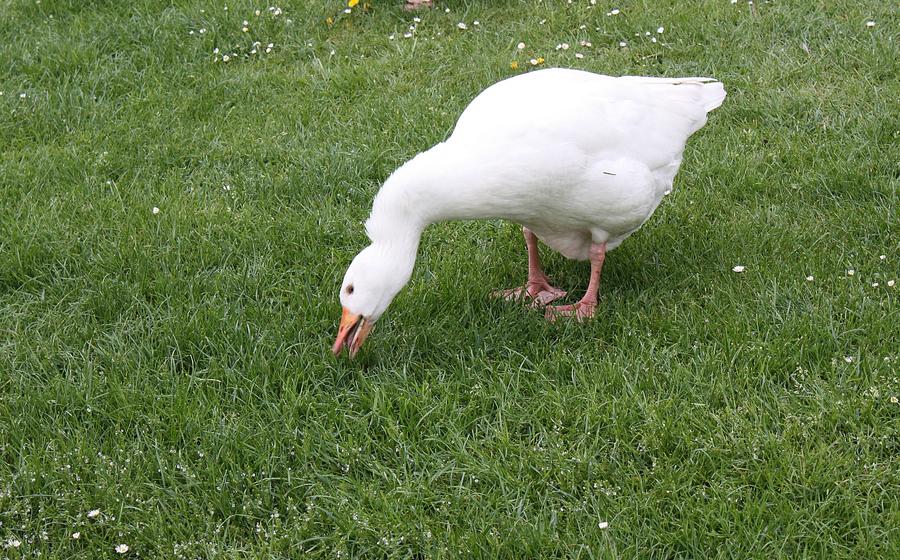
Franco German Garden
- A City of Contrasts
- Franco-German Garden
- Location and Accessibility
- Admission and Hours of Operation
- Exploring the Gardens
- The Rosengarten
- The German-French Garden
- The Mediterranean Garden
- The Japanese Garden
- The Children's Garden
- Dining Options
- Guided Tours
- Nearby Attractions
- Insider Tips for an Unforgettable Visit
A City of Contrasts
Saarbrücken, the capital of the Saarland region in Germany, is a city that seamlessly merges historical charm with modern innovation. With a rich past marked by French and German influences, Saarbrücken boasts a captivating blend of cultures, evident in its architecture, cuisine, and way of life.
Nestled along the Saar River, Saarbrücken's history dates back to the 10th century when it was a small settlement. Over the centuries, it has been ruled by both France and Germany, leaving an indelible mark on its identity. Today, the city proudly embraces its dual heritage, offering visitors a unique blend of French elegance and German efficiency.
Saarbrücken is a city of contrasts, where modern landmarks like the Saarbrücken Congress Hall, designed by renowned architect Erich Schelling, stand side-by-side with historical treasures such as Saarbrücken Castle, a grand edifice steeped in centuries of history. This harmonious coexistence of old and new creates a vibrant urban tapestry that captivates visitors from around the world.
Franco-German Garden
The Franco-German Garden, also known as the Deutsch-Französischer Garten, is a unique and captivating public park that epitomizes the spirit of peace, reconciliation, and cultural exchange between France and Germany. Its history dates back to 1960 when French President Charles de Gaulle and German Chancellor Konrad Adenauer envisioned a shared space that would symbolize the end of centuries of rivalry and conflict between the two nations.
Designed by renowned landscape architect Bernard Lassus, the garden was officially opened in 1963 and has since become a beloved destination for locals and visitors alike. Spread over 50 hectares, the garden is a testament to the power of collaboration and friendship, showcasing a harmonious blend of French and German culture, history, and horticulture.
The Franco-German Garden serves as a living symbol of the deep connection between France and Germany, standing as a reminder of the importance of understanding, cooperation, and mutual respect. Its creation marked a pivotal moment in European history, paving the way for increased cooperation and friendship between the two countries.
Location and Accessibility
The Franco-German Garden is strategically located in the heart of Saarbrücken, at the border between Germany and France. Visitors can easily reach the garden from either country, making it a popular destination for locals and tourists alike.
For those arriving by public transportation, numerous bus and tram lines stop within a short walking distance from the garden. Alternatively, visitors can take advantage of the ample parking spaces available near the entrance for those arriving by car. This convenient accessibility makes the Franco-German Garden an ideal place to spend a relaxing day exploring its many attractions.
Admission and Hours of Operation
Admission to the Franco-German Garden is free of charge. It is open to the public daily from 7 am to 8 pm. However, certain sections of the garden may have specific opening hours. For instance, the Rosengarten (Rose Garden) is open from 9 am to 4 pm, while the Crystal Garden is open from 10 am to 5 pm.
It is important to note that the garden's opening hours may vary during special events, holidays, or seasonal changes. Therefore, it is advisable to check the official website of the garden or contact the Saarbrücken Tourist Information Center for the most up-to-date information on opening times.
Exploring the Gardens
The Franco-German Garden is divided into several thematic sections, each offering a unique experience. The Rosengarten, or Rose Garden, boasts over 1,200 varieties of roses, creating a fragrant and colorful display. The German-French Garden, with its monuments and memorials, symbolizes the reconciliation between the two countries. The Crystal Garden, housed in a magnificent greenhouse, showcases tropical and subtropical plants from around the world. The Mediterranean Garden, with its olive trees, citrus plants, and aromatic herbs, offers a taste of the Mediterranean region. Finally, the Japanese Garden, designed in traditional Japanese style, features a koi pond, a teahouse, and a Zen atmosphere.
Notable landmarks and sculptures can be found throughout the garden. The Saarland Gate, a monumental archway, marks the entrance to the German-French Garden. The Europa Monument, a sculpture symbolizing the unity of Europe, stands prominently in the heart of the garden. The Crystal Garden features a stunning glass pyramid, housing a diverse collection of tropical and subtropical plants.
Themed events and exhibitions are regularly held in the Franco-German Garden, adding to its vibrant atmosphere. Rose exhibitions, concerts, art shows, and educational workshops are just a few examples of the events visitors can enjoy throughout the year. Whether you're interested in horticulture, history, art, or simply spending a relaxing day outdoors, the Franco-German Garden has something to offer everyone.
The Rosengarten
The Rosengarten, or rose garden, is a fragrant oasis within the Franco-German Garden. With over 500 varieties of roses, it showcases a vibrant tapestry of colors, shapes, and scents. The roses are meticulously arranged in themed sections, including a historical rose garden featuring old-fashioned varieties, a modern rose garden with contemporary hybrids, and a climbing rose garden with fragrant blooms cascading over trellises.
Strolling through the Rosengarten is a feast for the senses. The air is perfumed with the sweet fragrance of roses, and the vibrant hues of the blooms create a kaleidoscope of colors. Visitors can admire the delicate beauty of single-petaled roses, the velvety richness of double-petaled varieties, and the whimsical charm of miniature roses.
The Rosengarten is not just a place to admire roses; it also hosts a variety of events and activities throughout the year. From rose-themed exhibitions and workshops to guided tours and concerts, there's something for everyone to enjoy.
Tips for capturing the perfect rose photos:
-
Use a macro lens: A macro lens allows you to get up close and capture the intricate details of the roses.
-
Choose the right lighting: The best time to photograph roses is in the morning or evening when the light is soft and diffused.
-
Pay attention to the background: Make sure the background is simple and uncluttered, so that the roses are the focal point of the photo.
-
Experiment with different angles: Don't just shoot the roses from eye level. Try shooting from above or below to create more dynamic compositions.
-
Use a tripod: A tripod will help you to keep your camera steady and avoid blurry photos.
The German-French Garden
The German-French Garden, also known as the Deutsch-Französischer Garten, is a poignant symbol of peace and reconciliation between Germany and France. Inaugurated in 1960, this section of the park is a testament to the deep historical and cultural ties between the two nations.
Within the German-French Garden, visitors can explore several monuments and memorials dedicated to peace and friendship. The most prominent among them is the Deutsch-Französische Brücke, a footbridge that spans the Saar River, connecting Germany and France. The bridge is adorned with sculptures and inscriptions that symbolize the unity and cooperation between the two countries.
Another notable landmark within this section of the park is the Europa-Denkmal, a monument dedicated to European unity. The monument features a globe surrounded by 12 stars, representing the member states of the European Union. It serves as a reminder of the shared history, values, and aspirations of the European nations.
Exploring the German-French Garden is a powerful and moving experience that deepens one's understanding of the complex history between Germany and France, while also celebrating the enduring bonds of friendship and cooperation that have shaped the region.
The Mediterranean Garden
The Mediterranean Garden is an oasis of warmth and fragrance within the Franco-German Garden, transporting visitors to the sun-kissed shores of the Mediterranean. Olive trees, with their silvery leaves and gnarled trunks, stand tall, evoking images of ancient groves. Citrus plants, laden with fragrant oranges, lemons, and grapefruits, fill the air with a sweet aroma.
Among the olive and citrus trees, a variety of aromatic herbs and flowers thrive, creating a tapestry of colors and scents. Lavender, with its delicate purple blooms, rosemary with its pungent fragrance, and thyme, with its tiny white flowers, add to the sensory experience. Mediterranean-inspired sculptures, depicting scenes from mythology and everyday life, are scattered throughout the garden, adding a touch of whimsy and charm.
This garden is a celebration of the Mediterranean lifestyle, where life revolves around outdoor living, shared meals, and the appreciation of nature's bounty. Visitors can stroll along the winding paths, savoring the sights, sounds, and smells of the Mediterranean, and truly feel transported to a different world.
The Japanese Garden
A Serene Oasis Inspired by the Land of the Rising Sun
Step into a tranquil haven that pays homage to the beauty and serenity of traditional Japanese gardens. This meticulously landscaped section of the Franco-German Garden transports visitors to a realm of peace and tranquility inspired by the Land of the Rising Sun.
Designed with precision and attention to detail, the Japanese Garden features elements that evoke the essence of Japanese culture and aesthetics. Stroll along winding paths adorned with ornamental stones and lush greenery, creating a sense of harmony and balance.
At the heart of the garden lies a tranquil koi pond, its crystal-clear waters reflecting the surrounding foliage. Koi, the colorful Japanese carp, glide gracefully through the water, adding a touch of vibrancy to the serene atmosphere.
Discover a traditional teahouse nestled amidst the serene surroundings, inviting visitors to pause and sip on a refreshing cup of tea while contemplating the beauty of the garden. The teahouse's simple yet elegant design embodies the Japanese philosophy of wabi-sabi, embracing the beauty of imperfection and impermanence.
Experience the essence of Zen Buddhism as you wander through the garden, encountering carefully placed sculptures and water features that promote mindfulness and reflection. Let the tranquil ambiance wash away the stresses of everyday life as you immerse yourself in the serenity of this Japanese oasis.
The Children's Garden
The Franco-German Garden also features a dedicated Children's Garden, designed to provide a fun and educational experience for young visitors. The garden is divided into different themed sections, each offering unique attractions and activities.
One of the highlights of the Children's Garden is the large playground, equipped with swings, slides, climbing structures, and sandboxes. Kids can let their imaginations run wild and burn off some energy while enjoying the fresh air and sunshine.
In addition to the playground, the Children's Garden features several interactive features that are both educational and entertaining. These include water fountains where kids can splash and play, sensory gardens where they can explore different textures and scents, and a music garden where they can make their own music using outdoor instruments.
There are also several themed gardens within the Children's Garden, each designed to spark children's curiosity and creativity. The Fairy Tale Garden features whimsical sculptures and scenes inspired by classic fairy tales, while the Animal Garden introduces kids to the diverse animal life found in the region.
Throughout the year, the Children's Garden hosts a variety of educational activities and events, such as workshops, guided tours, and storytelling sessions. These events provide a great opportunity for kids to learn more about nature, culture, and history in a fun and engaging way.
Dining Options
Within the Franco-German Garden, visitors can find a variety of dining options to satisfy their cravings. The Gartenrestaurant Orangerie, located in the heart of the garden, offers a delightful menu featuring regional specialties and seasonal dishes. Guests can enjoy their meals in the elegant indoor dining room or on the spacious terrace overlooking the garden.
For a more casual dining experience, the Gartenbistro provides a selection of light snacks, sandwiches, and beverages. This cozy bistro is perfect for a quick bite to eat or a refreshing drink while exploring the garden.
Those who prefer to pack their own picnic can take advantage of the designated picnic areas scattered throughout the garden. These areas provide tables and benches where visitors can relax and enjoy their meals surrounded by the beautiful scenery.
Food kiosks are also available within the garden, offering a variety of snacks, ice cream, and cold drinks. These kiosks are conveniently located near the playgrounds and other popular attractions, making it easy for visitors to grab a quick bite while exploring the garden.
When visiting the Franco-German Garden, be sure to try some of the local specialties, such as Saarländische Dibbelabbes (a traditional potato casserole), Lyonerpfanne (a hearty skillet dish with potatoes, onions, and sausages), and Dampfnudeln (steamed sweet dumplings). These dishes are widely available at the restaurants and food kiosks within the garden.
Guided Tours
Guided tours of the Franco-German Garden are available for a more in-depth exploration of its history, symbolism, and various sections. These tours are led by knowledgeable guides who provide insights into the garden's significance as a symbol of peace and reconciliation between France and Germany. Visitors can learn about the garden's design, its unique features, and the stories behind the monuments and sculptures that adorn it.
Guided tours are offered in various languages, including English, French, and German, to cater to a diverse range of visitors. Advance booking is recommended, especially during peak tourist season, to secure a spot and avoid disappointment. The tours typically last for around 60 to 90 minutes and cover the highlights of the garden, including the Rosengarten, the German-French Garden, and the Crystal Garden.
By participating in a guided tour, visitors can gain a deeper understanding of the Franco-German Garden's historical and cultural significance, as well as its role in promoting peace and friendship between two neighboring countries.
Nearby Attractions
Saarbrücken offers a wealth of attractions beyond the Franco-German Garden. Saarbrücken Castle, a 16th-century Renaissance palace, houses the Saarland Museum, showcasing regional art and history. Saarland Museum is a must-visit for art and history enthusiasts, featuring collections ranging from prehistoric artifacts to contemporary artworks. Ludwigspark Stadium, home to FC Saarbrücken, is a popular venue for football matches and concerts. For a leisurely stroll, head to the Saarufer, a scenic riverside promenade offering stunning views of the city.
Insider Tips for an Unforgettable Visit
-
Best time to visit: While the garden is beautiful year-round, spring and summer offer the most vibrant displays of flowers and greenery.
-
Hidden gems: Discover the secret rose garden, tucked away behind the Crystal Garden, for a tranquil and fragrant experience.
-
Photo opportunities: Capture the iconic Peace Bell, a symbol of Franco-German friendship, set against the backdrop of the Saar River.
